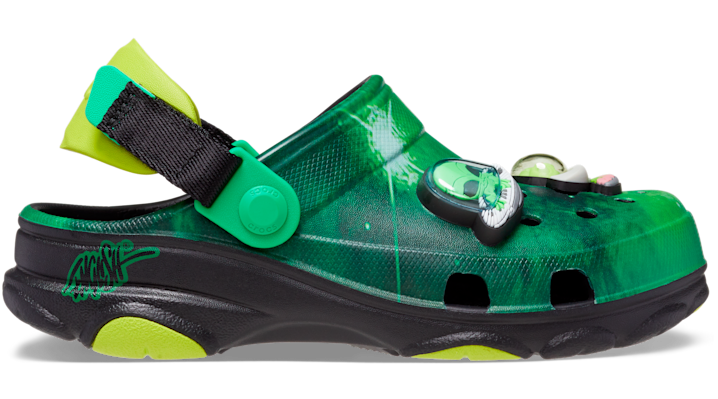Shoes are an essential part of our everyday life, providing comfort, style, and protection for our feet. Whether we are walking, running, or simply standing, shoes play a crucial role in keeping our feet healthy and happy. However, the world of shoes can be complex and confusing, with a variety of terms used to describe different styles, features, and materials. In this blog post, we will explore the meaning of various terms in shoes and help you understand the terminology used in the world of footwear.
- Sole
The sole is the bottom part of the shoe that comes into contact with the ground. It is usually made of rubber, leather, or synthetic materials and provides grip and support while walking or running. The sole can be either glued or stitched to the upper part of the shoe, which covers the foot.
- Upper
The upper is the part of the shoe that covers the foot and is usually made of leather, synthetic materials, or a combination of both. The upper can be designed in various styles, such as oxfords, loafers, or boots, and can be decorated with patterns or perforations.
- Insole
The insole is the part of the shoe that lies inside and directly under the foot. It is usually made of foam, leather, or gel and provides cushioning and support for the foot.
- Heel
The heel is the part of the shoe that is located at the back and under the foot. It can be made of various materials, such as wood, rubber, or plastic, and can have different shapes and heights. The heel provides support and balance while walking or standing and can also add style and elegance to the shoe.
- Toe box
The toe box is the part of the shoe that covers the front and top of the foot. It can be either pointed, rounded, or square, depending on the style of the shoe. The toe box provides room and comfort for the toes and can also affect the fit and style of the shoe.
- Laces
Laces are a common closure system used in shoes, consisting of a series of cords or strings that are threaded through eyelets or loops on the upper part of the shoe. Laces provide adjustability and secure fit for the shoe, and can also add style and design to the shoe.
- Velcro
Velcro is a type of fastener that consists of two strips of fabric, one with hooks and the other with loops, that can be pressed together to form a strong bond. Velcro is a popular closure system used in shoes, especially for children or individuals with mobility issues, as it is easy to use and does not require tying or untying.
- Slip-on
A slip-on shoe is a type of shoe that does not have laces or a closure system and can be easily slipped on and off the foot. Slip-on shoes are usually made of soft and flexible materials, such as canvas or leather, and can come in various styles, such as loafers, moccasins, or clogs.
- Wedge
A wedge is a type of heel that has a triangular shape and runs from the heel to the toe. Wedges provide more stability and support than traditional heels and can be found in various heights and materials.
- Platform
A platform is a type of sole that has a thick and flat surface and runs along the entire length of the shoe. Platforms can be found in various heights and materials and can add extra height and style to the shoe.
- Arch support
Arch support is a feature that provides support and cushioning for the arch of the foot. Arch support can be built into the insole or sole of the shoe and can help prevent foot fatigue and pain, especially for individuals with flat.
What does ps mean in shoes?
In shoes, “PS” can have different meanings depending on the context. Here are a few possible interpretations:
- Pre-School: In the context of children’s shoes, “PS” may refer to the shoe size range for pre-school age children, usually between the ages of 4 and 7 years old.
- Post Scriptum: In the context of shoe labeling or marketing, “PS” may be used as an abbreviation for “post scriptum”, which is a Latin term that means “written after.” In this case, “PS” may be used to add an additional note or message to the main content of a shoe advertisement or description.
- Performance Sport: In some cases, “PS” may stand for “performance sport”, which may be used to describe a type of shoe that is designed for sports or physical activity.
- Paul Smith: “PS” can also refer to Paul Smith, a British fashion designer known for his bold and colorful designs. Paul Smith has a line of shoes that may bear the “PS” branding.
It’s worth noting that these are just a few examples, and the meaning of “PS” in shoes may vary depending on the brand or context.
What does GS mean in shoes?
In the context of shoes, “GS” usually stands for “Grade School”. This is a size range that is typically used for youth shoes, generally for children between the ages of 6 and 12 years old.
The size range for “GS” shoes can vary depending on the brand and the specific shoe model, but it typically falls within the range of US sizes 3.5 to 7.0 for boys and 3.5 to 9.5 for girls. GS shoes are often designed with features that are tailored to the needs of active and growing children, such as durable construction, supportive cushioning, and good traction.
It’s worth noting that some brands may use different size ranges or terminology to describe their youth shoes, so it’s always a good idea to check the sizing chart and product information carefully when shopping for kids’ shoes.
What does TD mean in shoes?
In the context of shoes, “TD” typically stands for “Toddler”. This is a size range that is designed for very young children who are learning to walk and still have developing feet.
The size range for “TD” shoes can vary depending on the brand and the specific shoe model, but it generally covers children between the ages of 1 and 4 years old. TD shoes are designed to be lightweight, flexible, and easy to put on and take off, which is important for parents who may need to change their child’s shoes frequently throughout the day.
TD shoes may also feature other design elements that are tailored to the needs of very young children, such as extra cushioning, reinforced toes, and non-slip soles. These features can help support the natural development of a child’s feet and provide protection from bumps, falls, and other hazards.
As with other shoe size ranges, it’s always a good idea to check the sizing chart and product information carefully when shopping for TD shoes, since different brands may use slightly different size ranges or terminology.
What does DS mean in shoes?
In the context of shoes, “DS” can have different meanings depending on the context. Here are a few possible interpretations:
- Deadstock: In the sneaker culture, “DS” may refer to “deadstock”, which means a pair of shoes that are no longer being produced by the manufacturer and have never been worn or used before. Deadstock shoes are often considered valuable by collectors because they are rare and in pristine condition.
- Dual Strap: In some shoe models, “DS” may stand for “dual strap”, which is a design feature that involves two straps on the shoe instead of laces or a single strap.
- Designer Shoes: In the context of high-end fashion, “DS” may refer to “designer shoes”, which are shoes that have been designed by a famous fashion designer or luxury brand.
- Digital Scale: In some cases, “DS” may refer to “digital scale”, which is a measurement system that some shoe manufacturers use to ensure consistency in the sizing and production of their shoes.
It’s worth noting that these are just a few examples, and the meaning of “DS” in shoes may vary depending on the brand or context.
Hello, my name is Forekan Sadik and I am the proud owner and chief editor of crocsbazaar.com. I created this blog out of my sheer love and passion for the famous footwear brand, Crocs.
As a true Crocs enthusiast, I am always eager to share my knowledge and insights about this iconic brand with my readers. I strive to provide valuable and engaging content that helps my readers learn more about the comfort and design of Crocs.
Through Crocs Bazaar, I have built a loyal community of fellow Crocs lovers who trust my expertise and insights on everything related to this brand. I am committed to providing the highest quality content that educates and informs my readers on the ins and outs of the Crocs brand.
Apart from my work with Crocs Bazaar, I love to travel, explore new places, and try new cuisines. I am also a community geek, sports person and a digital nomad.Checkout my profile highlights. Connect with me in LinkedIn.

